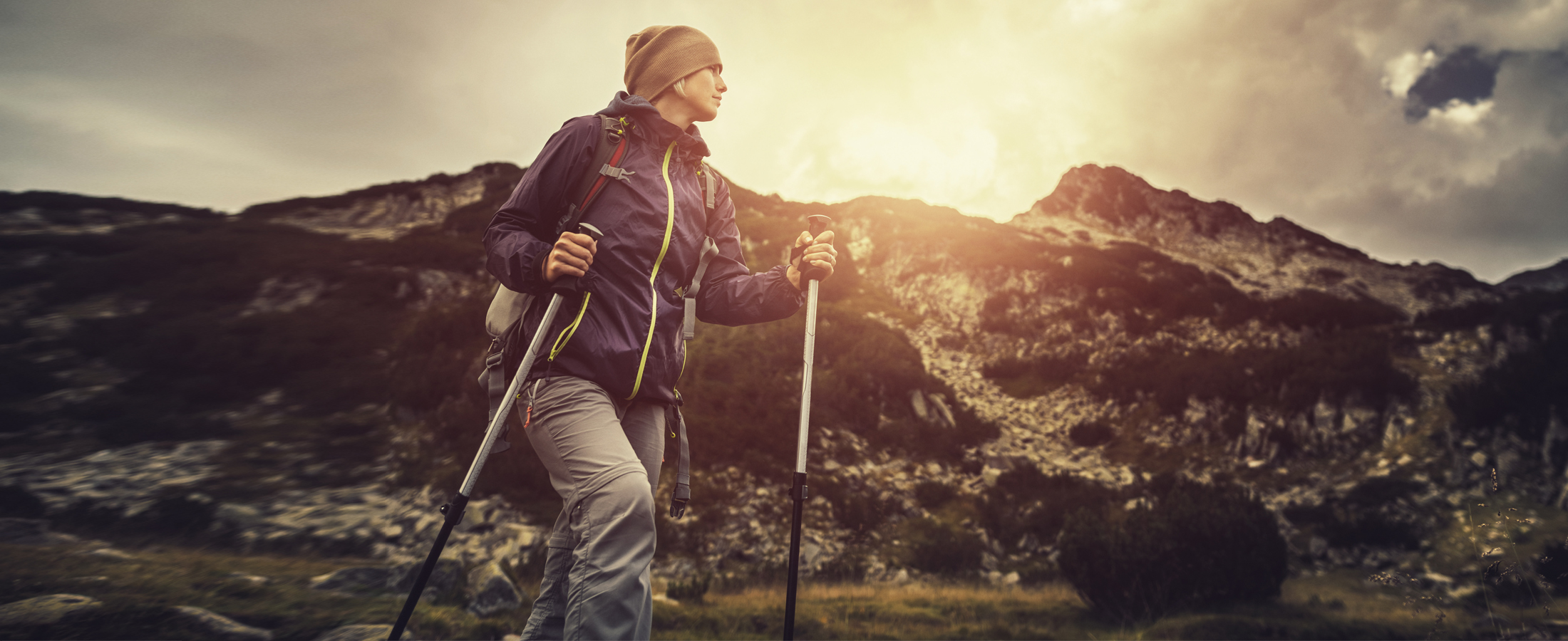Choosing Trekking Poles
i’m often asked whether i recommend the use of trekking poles on walks and/or when you’re out on long treks whilst using the TriBreath™ breathing rhythms and techniques or not.
In short the answer is, “Whatever feels best for you!”
There’s no doubt using trekking (walking) poles is a big advantage when it comes to those of us who, for whatever reasons have fragile knees. Using trekking poles allows those who otherwise couldn’t have made the journey make it, and more to the point enjoy the walk.
With that noted though there are a couple of factors that do come up with the use of trekking poles.
The two factors to consider is…
- the weight of the pole
- the length of the pole.
Just like there are so many different brands of trekking poles out in the market place, so too does the weight and length vary.
With regard to $$$’s, generally the cheaper the pole, the heavier the weight of the pole!
Getting the right trekking pole for you
The aspect of pole length is in my opinion the most crucial for enjoying life in a body free from restrictions and pain when out enjoying a long walk whilst using trekking poles.
As was mentioned above, the weight of each individual pole will vary considerably depending on what the pole is from and of course the length of the pole. So it makes sense that the longer the pole the more the pole will weigh.
The reason the length of the pole is so crucial to you is because of body structure!
When people start to fatigue during a walk one will tend to grip on the pole a bit and lean forward thus projecting the head forward. As all who practice the TriBreath™ techniques know, posture is the most important factor when it comes to the vitality and health of the body. It’s all about the nervous system and the ability of each nerve and cell to communicate with the central processing unit… your brain.
For the truth is its not only what is transmitted that counts, its what is received that makes all the difference!
When your head falls forward (falls off your cervical vertebrae) your shoulders as a matter of coarse rotate inward thus inevitably restrict lung function simply because your shoulders and arms compress inward and restrict the opening of your upper rib cage that is so necessary for both upper and lower lung expansion.
- Too short a pole length will cause your shoulders to rotate inward and that without a doubt is one of the biggest cause of diminished lung function apart from dehydration. This falling forward will also compromise hip stability in particular the iliopsoas muscle. Think of your iliopsoas muscle as being like tent ropes holding the tent pole upright. Many a lower back issue isn’t really a lower back issue… its generally a lower abdominal issue in particular the iliopsoas muscle and sacral imbalance.
- Too long a pole length will force your shoulders upward thus compressing your trapezius and rhomboid muscles of your upper back. This again forces your head forward and then the cycle of restriction on so many levels plays out. With your shoulders forced in this upward position, the pumping effect of your shoulder muscles (in particular the deltoids) combined with your arms movement from front to back that helps draw in oxygen and push out carbon dioxide is greatly compromised again restricting lung function.
Stress less, relax more!
Then there’s the natural placement of your shoulders when you’re holding your poles in a relaxed state.
The correct placement for your shoulders is as nature designed… that is with your upper arm and forearm at right angles to each other, and your shoulders in the Up, Back and Down position. If you’re not familiar with this technique, might i suggest you acquaint yourself with the Thumbs video.
That’s why at TriBreath™ we always practice pulling the chin in and lifting the head up from the back of the skull. When you pull your chin in and lift your head up from the back of your skull your shoulders are instantly pulled back with almost no conscious effort allowing your sternum (breast bone) to press forward. Its how your body, my body, everybody’s body is designed.
The beauty of this practice is that it creates a “heart first… head second” approach to movement whether you’re sitting, walking or running.
So in short, when choosing a set of trekking poles…
- Hold your shoulders in the Up, Back and Down position.
- Keep your upper arm and forearm at right angles to each other.
- When you grip the handle of the pole it should be easy to pull your chin in and lift your head up from the back of your skull in a relaxed manner whilst the end tip of the pole touches the ground.
If the hiking boots you use have a high heel and/or a thick sole, wear your boots when choosing your poles.
Because the truth is, that’s what it’s all about isn’t it. Enjoying the experience 🙂

Brett Hayes
TriBreath™ Coach
START LEARNING TRIBREATH™ TODAY
MAXIMISE YOUR POTENTIAL BY JOINING THE TRIBREATH MEMBERS COMMUNITY


